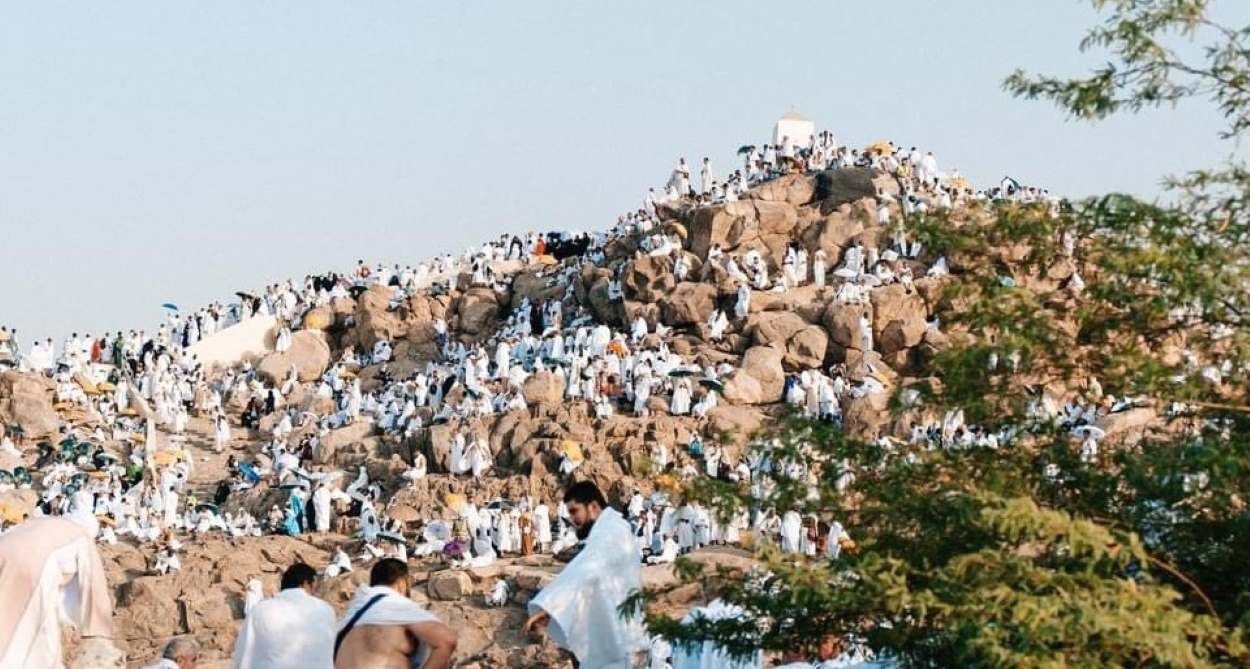Today, over 1.5 million Muslims will convene on Mount Arafat, enduring extreme temperatures, to observe the peak of the annual Hajj pilgrimage.
Participants from around the globe will climb the 70-meter (230-feet) hill situated 20 kilometres (12 miles) from Makkah, a location revered as the site of Prophet Mohammed’s (PBUH) final sermon. Temperatures are expected to reach 43 degrees Celsius (109.4 Fahrenheit), posing significant challenges, particularly for older participants, during this critical day of prayer.
Saudi authorities have advised pilgrims to stay hydrated and protect themselves from the sun. With men not allowed to wear hats, many carry umbrellas to shield themselves.
Last year, over 10,000 heat-related ailments were reported during Hajj, with 10 per cent of these cases being heatstroke, a Saudi official disclosed to AFP.
According to a Saudi study, the Hajj, one of the largest religious gatherings globally, faces increasing challenges from climate change, which has raised regional temperatures by 0.4C each decade.
However, Mohammed Farouk, a 60-year-old Pakistani pilgrim, remains undeterred by the harsh conditions. “The Hajj is very important for me as a Muslim,” he stated.
The pilgrimage is deeply religious and brings considerable economic benefits to Saudi Arabia. Pilgrims spend the night before Arafat Day in Mina in a vast tent city. They sleep in air-conditioned tents grouped by nationality and the cost of their Hajj packages, which can amount to several thousand dollars.
Following their time on Mount Arafat, pilgrims move to Muzdalifah to collect pebbles for the “stoning of the devil” ritual back in Mina.
Reflecting a tradition that dates back about 1,400 years, the Hajj retraces the steps of Prophet Mohammed’s (PBUH) final pilgrimage. It underscores the Saudi monarch’s role as the “guardian of the two holy mosques” in Makkah and Madinah.






